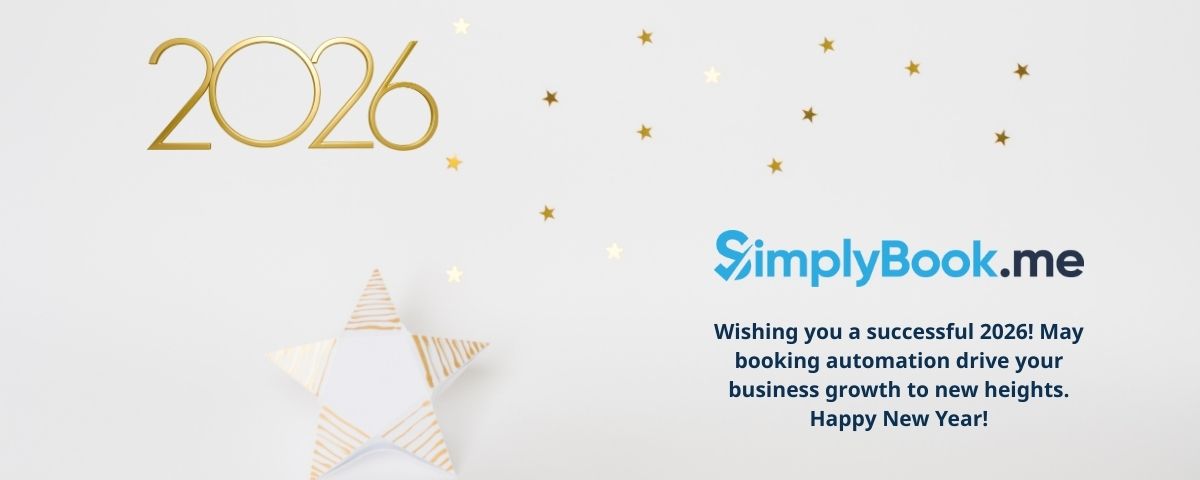5 SEO Strategies That You Can Implement to Drive Traffic to Your Online Booking System

This post is also available in:
![]()
![]()
![]()
![]()
When your clients search for a service you offer on Google, does your business appear in the SERPs?
If the answer is no, you’re losing out on potential bookings. In fact, even if your site appears but is buried on the fourth or fifth page, it’s essentially invisible.
Most people don’t scroll that far, so you need to make it to the top. And if you do, there are a lot of advantages.
Consider these statistics from FirstPageSage:
- 39.8% CTR: Top position in search results.
- 18.7% CTR: Second position.
- 10.2% CTR: Third position.
The first page is prime online real estate for attracting attention and securing bookings, and to get there,
you need a strategic approach.
In this post, let’s take a look at SEO strategies that can help you drive more traffic and bookings for your website.
5 Effective SEO Strategies to Drive Traffic to Your Online Booking System
Before we begin, let’s be clear – SEO requires consistency and patience. So, make sure you are in it for the long haul to actually see more traffic and conversions.
1. Ideate Topics Using Personas & Keywords
Google values content that is insightful and relevant for the target readers. To create such content, you need to get into the psyche of your audience. A simple way to approach it is to map out your target personas, and then move on to keyword research and topic ideation.
Target Personas
Every business has a variety of customers, each with their own needs and preferences. Creating target personas helps you understand and connect with these different groups more effectively.
Think of personas as profiles of your typical customers. For example, your customers could include solo travelers, couples, and even families.
By developing these personas, you can:
- Tailor your content to specific audience segments
- Address the unique challenges each group faces
- Use language and examples that resonate with each persona
“Get granular with your personas to get your strategy right. For a booking system, you’ll want to look at factors like preferred booking windows, deal-seeking behaviors, or even device preferences. This level of detail will allow you to tailor the content and the entire user experience to match what each persona is looking for,” advices Sarah Jameson, Marketing Director at Green Building Elements
Here is what you need to look at to create detailed personas:
- Demographics: Age, gender, income level, education, occupation.
- Behavior Patterns: Online behavior, booking habits, preferred communication channels.
- Needs and Pain Points: What are they looking for in a service? What problems are they trying to solve?
- Interests and Preferences: What kind of experiences do they prefer? What are their hobbies or interests related to your service?
- Goals and Motivations: What are their goals when booking your service? Are they looking for convenience, luxury, cost-effectiveness?
- Geographic Location: Where do they live? Are they local customers or traveling from abroad?
- Customer Journey: How do they find your business? What steps do they take before they make a booking?
When you’ve defined your personas, you’ll have a better idea of the content that will resonate with each one. Their preferences will guide the search queries they use.
Let’s say you run a hotel that hosts both weddings and corporate events. Wedding planners might search for “affordable wedding hotels in New York,” while corporate event organizers might look for “corporate meeting venues in New York.”
Both groups have different needs, so the focus of your content should be different for both groups. This way, you can create content that resonates better with them.
Keyword Research
Next, identify popular keywords in your niche or industry for your defined target personas.
For example, budget-conscious backpackers might search for terms like “cheap hostels in Madrid” while solo travelers might look for “Best hostels in Madrid for solo travelers.”
When you know these terms, you can optimize your content so that it has a better chance of appearing in the search results.
For keyword research, you can use tools like:
- Google Keyword Planner
- SEMrush
- Ahrefs
- Moz Keyword Explorer
Using these tools, you can get data on search volume, competitor rankings, and ranking difficulty. You can also check related keywords and get suggestions on other related keywords.
But be selective about the keywords you pick.
It’s best to avoid broad, generic terms. Instead, focus on long-tail keywords. These are longer, more specific phrases that people use when they’re closer to making a booking decision.
“When we’re optimizing our pages, we focus on long-tail keywords over broad terms. These specific phrases face less competition and address particular user needs. So, people want to sign up when they find exactly what they were looking for,” shares Simon Bacher, CEO & Co-Founder of the Ling App
Long-tail keywords are valuable because:
1. They have less competition, making it easier for you to rank well in search results
2. They show clear user intent, helping you attract more qualified leads
3. They often lead to higher conversion rates, as searchers are more likely to find exactly what they’re looking for
Topic Ideation
Next, use the keywords you’ve identified as a foundation for your content.
For example, Ling took the keyword “Turkish phrases for tourists,” and created multiple sub-topics around it. Based on it, they came up with posts on:
- 100 Basic Turkish Phrases For Eager Tourists
- 30+ Turkish Phrases For Asking Advice From A Local
- 50+ Easy Must-Know Transportation Vocabulary In Turkish
Similarly, you can also come up with multiple topic ideas for each seed keyword by slightly varying the focus.
2. Create Content Pillars
To drive more traffic and get more bookings, you need to plan your content so that it is helpful for the readers as well as search engines. That’s possible with a content pillar-centric approach.
Content pillars are big, detailed articles or pages about a main topic related to your business. Think of them as the center of a web, with smaller related articles linking back to them.
Search engines like this strategy because it shows you have in-depth knowledge of a specific subject. This can help your website appear higher in search results. It also helps your website visitors easily find all the information they need about a topic.
“Let’s say we’re creating a detailed guide on ‘First-Time Home Buying’ as a central piece of our content. Alongside it, we’ll publish smaller articles on topics such as ‘Understanding Credit Scores’ and ‘Saving for a Down Payment,’ all linking back to the main guide. We want to boost our visibility for first-time homebuyer searches,” shares Kris Lippi, Owner of ISoldMyHouse.com
This will provide value to both users and search engines, ultimately driving more traffic and bookings.
If you want to come up with ideas for pillar content, here’s what you can do:
- Identify major themes: Look at the overarching topics related to your business.
- Examine FAQs: Review common questions your customers ask and analyze support tickets or customer service inquiries.
- Research industry trends: Look for emerging topics in your field
Pro Tip: Use platforms like AnswerThePublic, Google’s People Also Ask, Reddit, and Quora to discover topics quickly.
3. Add Internal Links
Internal linking is a simple way to improve both your search rankings and user experience.
For search engines, internal links show how your content is connected and which pages are most important.
For your visitors, internal links make it easier to navigate your site. They guide people to related information, keeping them engaged and on your site longer. This increased engagement can lead to more bookings or sales.
So, internal links are important, but what kind of links should you add?
Here are some different types of internal links you can add to your content:
- In-content links: Links that fit naturally in your writing
- Menu links: Help people find main pages quickly
- Footer links: Guide users to key pages from the bottom of your site
- Related content links: Show similar articles or booking pages
This strategy works well to organize your pillar content.
For example, you can add links to country and city guides in your pillar post on the “Best European Destinations.”
This creates a well-organized network of content that’s easy for people and search engines to explore.
4. Focus on Local SEO
If you run a business that serves a specific area, like a hotel, restaurant, shop, or service provider, focus on local SEO. It helps you appear in searches when people look for businesses “near me” or in a particular city.
When you rank high in local searches, you attract more local customers, drive more visits to your website, and boost bookings, sales, and foot traffic.
- Complete Your Google Business Profile: When someone looks for your business on Google, make it easy for them to know everything about you via a well-optimized Google Business Profile
Add photos, accurate hours, and a clear description of what you offer. For added credibility, ask satisfied customers for ratings and reviews on your profile. - Target Location-Specific Keywords: Add location-specific keywords on your website and posts. For example, if you own a hotel in San Diego, create a guide to the best beaches or list upcoming festivals. This local content helps establish you as an area expert and improves your local search ranking by demonstrating relevance to your location.
- Get Listed on Local Directories: Get your business listed in at least relevant directories, such as Yelp, Yellow Pages, and your local Chamber of Commerce to build trust, get more visibility, and drive traffic.
5. Focus on Mobile Optimization
Over 60% of internet traffic comes from mobile devices, so Google uses mobile-first indexing for rankings. This means Google mainly uses the mobile version of your site to determine your rank. If your site isn’t mobile-optimized, you could lose out on valuable rankings.
Plus, it also gives a poor user experience. If your site is difficult to use on a phone, potential customers might abandon their booking and go elsewhere.
At SEOProfy, we’ve been using Chrome Lighthouse for quick site audits.
This tool checks your pages for performance, and accessibility, and also provides suggestions on how to improve your site.
[Google recommends this tool after they retired their Mobile-Friendly Test and the Mobile Usability report in 2023.]
In addition to this, pay attention to your CTA buttons while designing your site.
Make sure they’re large enough so that they are prominently placed and it is easy to tap them. It’s a simple tweak that will simplify the user journey on mobile devices.
Conclusion
To set your online booking system up for success, start by creating content that speaks directly to your audience using targeted keywords. Build comprehensive content pillars to establish authority in your field. Don’t forget to connect your content with smart internal linking. If you’re serving local customers, prioritize local SEO to appear in nearby searches. Lastly, ensure your site works flawlessly on mobile devices.
Remember, SEO is ongoing, so keep monitoring and adjusting your approach.
Ready to take the next step? Create custom booking pages for your website right now with SimplyBook.Me and grow your business!
Author Bio
Victor Karpenko is the Founder & CEO of SEOProfy, a data-driven digital marketing agency. His agency has a team of over 200 SEO specialists, working with clients across 45 countries.




Comments
0 commentsNo comments yet